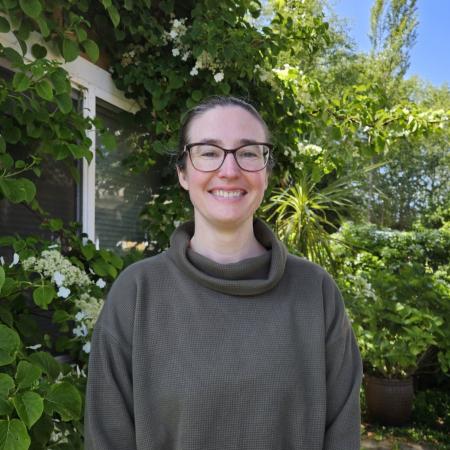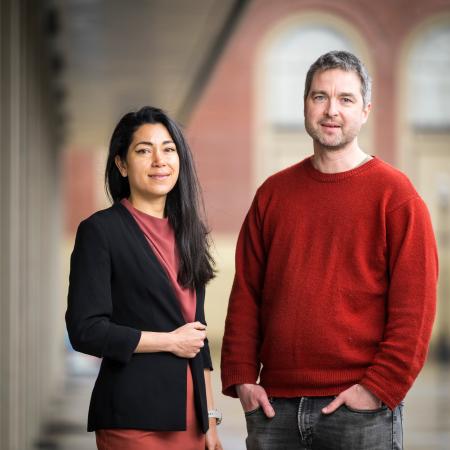In 2012, Daniel W. Schafer wrote the following chapter about our department’s history in a book entitled “Strength in Numbers: The Rising of Academic Statistics Departments in the U.S.,” published by Springer in New York, N.Y.
History of the Department of Statistics at OSU
History of the Department of Statistics at OSU
1919–1957 and the Birth of the Department
In 1919, the Oregon Agricultural College offered its first two statistics courses—Mth 103, Elements of Statistical Methods, which was “an elementary mathematical treatment of graphic representation of data, frequency distributions and curves, averages, index numbers, and measurements of dispersion and correlation;” and the similarly titled ES 313, The Elements of Statistical Methods, in the Economics and Sociology Department. Other statistics courses were introduced in the next decade in the Departments of Mathematics, Business Administration, Education, Economics and Sociology, Farm Crops, and Agricultural Economics.
For its own majors, the Mathematics Department introduced the Mathematical Theory of Statistics sequence, Mth 441, 442, and 443 in 1932. The instructor, William Kirkham, had just published the book Elements of Mathematical Theory of Statistics with Forestry and Economic Applications in 1931. According to Jerome Li’s notes from 1966, Henry Scheffé, who was then a young instructor of differential equations at Oregon State College (the new name, as of 1937), attended some of Kirkham’s classes and “was so fired up by statistics” that he left Oregon State to retrain himself as a statistician with Samuel Wilks at Princeton. Other Mathematics instructors who turned their attention to statistics were Paul Hoel (who went on to UCLA after studying statistics in Oslo) and P.C. Hammer (who went to Wisconsin in 1947). Kirkham also started a university statistical consulting service in the 1930’s, but the program petered out during the Depression and was discontinued.
Hammer worked at Lockheed Aircraft and Kirkham served in the navy during World War II, but both returned to Oregon State after the war. In 1946, Kirkham again taught the Theory of Statistics sequence and Hammer taught Mth 341 and 342, “Applied Statistics,” which was aimed at engineering students and required calculus. They were joined by new assistant professor, Jerome Li, who taught Mth 109, a course in elementary statistics originally designed for Forestry students in 1932, but mainly attended by business and technology students after the war. All three of the statistics-teaching faculty members taught mathematics courses as well. According to Li, there was no doubt that statistics was only a minor side line in the Mathematics Department at the time. Several events in 1946 and 1947 began to strengthen the statisticians’ ties with the Agricultural College, though, paving the way for the birth of the Statistics Department.
First, Li’s Mth 109 course faded away because the Business and Technology Department started offering its own statistics course. Li assumed two major responsibilities instead: he took over the Applied Statistics courses when Hammer left and he revived Kirkham’s statistical consulting and computing service for the Agricultural Experiment Station. Apparently motivated by colleagues in Agriculture, Li dropped the calculus prerequisite from the Applied Statistics course to make it more accessible to agriculture graduate students. He didn’t receive any student interest at first and the course only survived because of the help from Robert W. Henderson, assistant to the Associate Director of the Agricultural Experiment Station who, “with great effort,” recruited six graduate students—one from each of the six Agricultural College departments. The sequence did catch on and with GI’s coming back from the war the enrollment increased steadily.
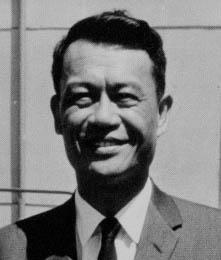
Figure 1. Jerome Li
Jack Borsting’s reflections on Jerome Li.
Jack was an undergraduate student at Oregon State College from 1947 to 1950. He has served as Dean of Business Schools at the University of Southern California and the University of Miami, and as Assistant Secretary of Defense (Controller) under Presidents Carter and Reagan, and was president of the Operations Research Society of America (ORSA) and of the Military Operations Society of America (MORS).
Jerome Li was instrumental in my decision to study statistics and get my advanced degrees in mathematics and statistics. The first statistics course I had as an Oregon State undergraduate majoring in mathematics was in 1949 from Professor Li. The course was a good mix of some theory and applications of statistics. Professor Li’s way of analyzing data and applying statistics to real problems appealed to me. It was surprising that my interest in statistics was started with his first course because we had to calculate analysis of variance tables, etc. with a mechanical Monroe calculator and, of course, if one made mistakes they had to go back and do the calculations again.
I talked to Jerry Li about going on to graduate school and studying statistics, and he suggested that one of the best places to go would be to the University of Oregon where I would study under Will Dixon and Frank Massey. One of the reasons Professor Li recommended going to Oregon was Dixon and Massey’s blend of theory and application. I credit Professor Li for steering me on a very exciting and profitable career path. At that time, there was not a statistics department at OSU and Professor Li was the only statistician in the Mathematics Department so I obtained my degree in mathematics.
Later in my career, when Lyle Calvin was the statistics department chairman, I was asked to be a visiting distinguished professor for one summer. I taught a course in discriminant analysis to Ph.D. students and was able to interact with other faculty members and students in the department. In 2004, my wife and I endowed a fellowship in graduate statistics in the department. We have worked closely with two chairmen of the department, Dan Schafer and also Bob Smythe.
In 1953, Li was given his own budget and the Statistical Consulting and Computing Service became the Department of Statistical Service. Lyle Calvin, the first faculty member at the University to have a Ph.D. in Statistics (from North Carolina State University) was hired that year as an associate professor of Statistics in the Agricultural Experiment Station. (Calvin was hired at the associate level by mistake. OSU mistook his title of “assistant” at NCSU for “assistant professor,” and offered him the promotion as part of the recruitment package.) Roger Petersen, also with a Ph.D. in Statistics from North Carolina State, was added as an Experiment Station assistant professor in 1955. Now that Li had his own budget for statistical service and two additional assistant professors devoted entirely to statistics, the Department of Statistical Service became the center of statistics on campus. Given the inefficiency associated with duplicative statistical instruction—as symbolized by those first two statistics courses in 1919—it seems natural that the Department of Statistical Service would gain responsibility for coordination of statistical instruction.
In 1957, in fact, the Department of Statistical Service was organized as an instructional unit in the School of Science, independent of the Mathematics Department, and was given responsibility for coordinating statistical instruction on campus. The Department was physically located in Extension Hall at the home of the consulting and computing service. There were two sub-units operating cooperatively—the instructional unit in the College of Science and the service unit within the Agricultural Experiment Station. Research activities were carried on within both units. Li, Calvin, Peterson, and Richard Link (one of John Tukey’s students, who had been hired as a theoretical statistician by the Mathematics Department in 1955) were the original faculty members, with Li the first chairman. At that time, the Department offered a Master’s degree in Statistics and minor degrees on Master’s and PhD degrees offered in other departments.
1961–1981, Growth of the Department under Lyle Calvin
In 1961, Oregon State College was renamed Oregon State University, the Statistics Department acquired its first computer—an IBM 1620, and Jerome Li served his last full year as chairman. In 1962, Li retired for health reasons, and moved to Taipei. In addition to starting and chairing the Department of Statistical Service, Li managed to write three books in a short time span: Introduction to Statistical Inference, 1957; Statistical Inference, 1964; and Numerical Mathematics, 1966. Li died in 1969 at age 55.
Lyle Calvin was chair of the Statistics Department from 1962 to 1981. More than any other person, Calvin shaped the modern Oregon State University Statistics Department. In the early 1960’s, Calvin envisioned an opportunity for future expansion and articulated a desire for additional faculty members who could participate in both consulting and research, with particular interest in areas of fisheries and wildlife ecology, system simulation, stochastic processes, biometry, and sampling techniques. While the department anticipated an increase in the training of mathematical statisticians, it’s clear that Calvin placed a major emphasis on applied programs for instruction, research, and service; and on research into methodology associated with consulting services projects. This vision was accompanied by remarkable growth. Sixteen tenured or tenure-track faculty members were hired in a 7-year span from 1962 to 1969: Donald Chapman, William Lowry, Donald Jensen, Edwin Hughes, Donald Guthrie, Kenneth Rowe, Scott Overton, David Faulkenberry, Donald Pierce, Thomas Lindstrom, Fred Ramsey, David Thomas, Charles Land, Norbert Hartman, Hugh Dan Brunk, and Justus Seely.
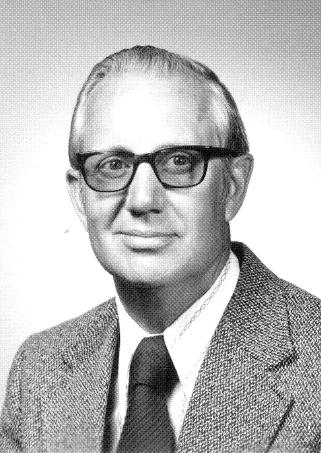
Figure 2. Lyle Calvin
The first Master’s Degrees in the Department were granted in 1962—to David R. Thomas and Arnold Schroeder. In 1965, a doctoral program was added and new minors were approved in Biometry and Operations Research. The first five Ph.D. degrees in the Statistics Department were granted in 1969—to T.D. Burnett, J. Reinmuth, C.J. Phillips, A. Hirunaraks, and R. R. Fossum. In 1966, the Department moved from Extension hall to the former library, Kidder Hall, where it resides today. Also in 1966, a campus-wide Computer Center was established and the computer facilities of the department were transferred to the center.
Recollections of the early years by Don Guthrie.
Don was on the faculty from 1963 to 1973 before leaving to complete his illustrious career in the Biostatistics Department at UCLA. He was the major professor for six of the first eight Ph.D. students to graduate from the Department and eight in all.
The decade I spent at OSU was an exciting time, both for me and for the Statistics Department. I arrived while the department was still primarily involved with service teaching and consulting; what little graduate work was available ended with the Masters degree. Teaching loads were imposing and there was little time or encouragement for research. But we took advantage of the flourishing development of higher education during the 1960s, we hired new young faculty, we developed a new 4 PhD program, and we expanded our extramural support. By the time I left, we had become recognized as a vibrant and growing program. The faculty focus broadened to include statistical research, we secured grant support directly to the department, we recruited bright and eager students, and our graduates moved into responsible careers. Disputes with university administrators notwithstanding, we had formed the nucleus of a vibrant program that reflected the goals of OSU and the statistics profession.
Then, as now, the focus of OSU Statistics was on development and adaptation of statistical ideas in the context of applied research. Continuing associations with active research units provide motivation for statistical advances and for student experiences. Close association with Mathematics has continued to the present. The Computing Center developed one of the first truly interactive time-shared operating systems, and that facilitated our innovation in including computing in our service and our core graduate teaching. After leaving OSU, I discovered that many statisticians did not believe that we could integrate computing at this depth. Of course, this is now the norm across the profession; I’m proud that we were at the forefront.
I supervised ten doctoral dissertations at OSU -- eight in Statistics and two in Mathematics -- and many Masters projects. The academic atmosphere was ideal for me, neither too theoretical nor too applied. I feel gratified that this spirit continues today.
Recollections about the first years of the graduate program, by Jim Reinmuth.
Jim was one of the five students granted Ph.D. degrees from the Statistics Department in 1969. He joined the University of Oregon's business faculty in 1967 and served as dean from 1976 to 1994.
When first admitted to the MS program, I honestly didn't know the location of OSU. My first day in the office, I met Don Guthrie who was also new to the department. Don ultimately became my program advisor and subsequently, a good friend. As a Stanford graduate, Don was the outlier to the Iowa State and North Carolina State contingents who comprised the Statistics faculty at the time. As both an MS and PhD student, I was a classmate of Tom Burnett who spent most of his career with Portland General after a brief stint with the Naval Academy. Bill Maki and Hungfu Chiang were also MS classmates who did not continue on for a PhD. Bill spent his entire career with Weyerhaeuser, while Hungfu enjoyed a successful business career in Hong Kong.
I completed my MS degree in 1965 at a time when written research papers were required. My paper was an application of linear programming to the securities market, and during my presentation, Mathematics Professor Harry Goheen fell asleep. At least I thought he was asleep until he startled me with a question that indicated he had heard every word I had uttered. To this day, I think Harry Goheen was a plant to see if I could be rattled during my presentation.
I began my PhD studies in 1965 with Tom Burnett, Charles Phillips, Bob Fossum, and Samir Saad, an Egyptian student. We all enjoyed Samir as a classmate, since he had an uncanny ability to solve challenging assignments from Ed Hughes, Don Guthrie, and other faculty who were testing our patience. Better yet, Samir would always share his discoveries with us. For those who may remember, Samir was the guy who claimed someone had left a bomb on his doorstep disguised as a milk bottle. When the milk bottle turned out to contain Grade A pasteurized milk, Samir was sent home and we lost our in-house tutor.
At the time, the Statistics Department was a very comfortable family, with Lyle Calvin as the leader. Lyle, Don Guthrie, Scott Overton, Ed Hughes (briefly), Dave Faulkenberry, Don Pierce, Dave Thomas, Ken Rowe, and Roger Peterson were supportive mentors and great friends. It was the Statistics Department lunchroom where I learned to play bridge, a pastime that has consumed a lot of my time over the past 47 years. I also recall fondly program assistants Peg Stuart and Dotty Jameson who were always available to help the students when we required assistance.
My experience with the Statistics Department at OSU was life-changing for me. After earning an undergraduate degree in math from the University of Washington, I didn't know where to turn until a UW advisor recommended that I contact Lyle Calvin. My studies at OSU helped prepare me for an enjoyable, rewarding 44-year career with the University of Oregon. At OSU, I also met my wife (we've been married 45 years) and OSU is the alma mater for our two daughters.
Despite the rapid growth of the Department in the 1960’s, its status was not altogether secure. The Dean of the College of Science didn’t see a need for statistics, which prompted intense discussions about the future of the Department. This came to a head in 1968, when Calvin commissioned an outside review by David Blackwell, William Kruskal, and Lincoln Moses. In their report, these eminent statisticians found much that was good with the Department, praised it for its collaboration with other units, and found the number one weakness to be a deficiency of mentors for Ph.D. students. Their recommendation to hire a senior faculty member forced the dean’s hand. The Department was allowed to continue and to search for a senior faculty member, which lead to the hiring of Hugh Daniel Brunk. Brunk’s pioneering work in isotonic regression and mathematical statistics immediately enhanced the reputation of the Department.
Reflections of Don Pierce.
As a faculty member from 1966 to 1996, Don was a top researcher, making contributions in many areas but most notably in methodology and application in radiation health epidemiology and in higher-order asymptotics.
Although I cut my career at OSU somewhat short to work in Japan, I want to say that OSU Statistics was a great place for me in all respects. These mainly had to do with the quality of the faculty and students, and the leadership of Lyle Calvin. Here I will mention only a few of many things, those coming first to my mind.
Shortly after I joined the department, I found that OSU Stat was what turned out to be more than a decade ahead of its time in terms of statistical computing. Don Guthrie developed under an NSF grant a university-wide mainframe, time-sharing teaching system SIPS that used TTY machines distributed around the campus. This software was perhaps closest to the Minitab that came along about a decade later, and was simply revolutionary. In 1961-65 during my Ph.D., like most others I never actually did a multiple regression of any reality, but 3 years later we were having hundreds of students from all over campus doing this. The importance of SIPS was not only for teaching but for our more general statistical practice, and it was kept alive even beyond its time by Ken Rowe in experiment station work.
The program of outstanding visiting statisticians mentioned later in this history had a profound effect on my professional development. Even today, I very often think of things I learned from those such as Bill Cochran and David Cox. Similarly, much of one’s professional development derives from faculty colleagues, and I want to say to say that much of my “education” on statistical theory came from interactions with Dave Thomas. It seems that he learned more readily than I did what the theory of statistics was all about, e.g. the real meaning for applications and research of theory such as one finds in the advanced texts by Lehmann. His creativity is not adequately reflected by publications, but was widely recognized. For example early work in Cox regression often pointed to his unpublished technical reports as first discovering aspects of that theory, and Art Owen often credited a paper of Dave’s for first using the idea of empirical likelihood.
Partly since the author of this history will not be doing this, I want to comment on the importance of the text The Statistical Sleuth by Fred Ramsey and Dan Schafer. Those unfamiliar with this text should look at the review by G. W. Cobb in The American Statistician, 2000, pp. 78-81. This highly original text reflects the insights and diligence of the authors, and has had considerable influence in the teaching of the statistical craft, having been adopted for coursework by about 65 departments in the U.S.
The Oregon Fish and Wildlife Service was legally mandated to estimate the effects of fisherman and hunters on fish and wildlife populations, but lacked the expertise to do so themselves. With their funding, Calvin; Roy Young, the Dean of Research; and Bob Mason, created the Survey Research Center (SRC) in 1973. The SRC resided in the Statistics Department, with Calvin as director. This made sense because most survey centers that were forming in social science departments lacked the statistical expertise to produce credible results. At that time, Iowa State and Oregon State had the only Survey Centers that were embedded in Statistics Departments.
Robert Mason, on the first years of the Survey Research Center.
Bob was an editor for the Agricultural Experiment Station’s news publication, but was enlisted to help start the Survey Research Center in 1973 because of his familiarity with questionnaire design. He continued to work for the Center until his retirement, and continued to help out in retirement until 2009.
We received immediate attention due to our work on admitted tax evasion (supported by the Oregon Department of Revenue), in which one out of four in our Oregon sample admitted that they cheated on their taxes. The IRS immediately said that our study was wrong…that only about 5% were delinquent. The New York Times gave our study a full run, and I had to testify before Congress about our results. The head of the IRS had a very uncomfortable session, for he had no data to support how much cheating was going on. I was sweating our testimony but the House panel that heard the testimony agreed and told the IRS to get cracking on their own studies. I worked with Bill Lefbom, the IRS researcher in charge of their study. Their results showed that US taxpayers were cheating at about the 30% level and that most of it came from underreporting income, not overstating deductions or failure to file. In that respect, their results supported ours.

Figure 3. Oregon State University Statistics Department, 1979. From left: Ken Rowe, Dan Brunk, Paula Kanarek and child, Dave Thomas, Shirley Neyhart, Justus Seely, Lyle Calvin, Dave Faulkenberry, Dave Butler, Roger Petersen, Don Pierce, Dave Birkes, Fred Ramsey, Jeff Arthur
In the years 1965–75 the Department had a Biometry Training Grant, which permitted visits of 1–3 weeks by a great many of the most prominent statisticians of that era. The chance to interact with these people had an important impact on the faculty. Among the visitors were David Cox, William Cochran, David Blackwell, Dennis Lindley, Nathan Mantel, R. L. Anderson, and Walter Smith. Also during this time, many of the Department’s faculty members established overseas connections. Lyle Calvin spent time in Egypt and Scotland; Roger Peterson in Syria; Dave Faulkenberry in Yemen, Oman, and Egypt; Justus Seely and Dave Thomas in Egypt; and Don Pierce in Japan.
1982–2010 and the Recent Era
Dave Faulkenberry became the Department Chair in 1981 when Calvin stepped down to become Dean of the Graduate School, and Justus Seely took over from 1984 to 1997. When Seely retired, the Department was very short on senior faculty members and an external search led to the hiring of Bob Smythe, who had been chair at George Washington University. Smythe served as chair at OSU from 1998 until 2008. Dan Schafer followed him in 2008. The economic picture for higher education in Oregon was not great in this time span. The Statistics Department owes a great deal to Seely and Smythe for their perseverance in representing the Department in this period.
The gender composition changed remarkably in these years. In 1982, all fourteen of the Department’s tenure-track faculty members were male (and mostly named Dave, Dan, or Don). In 2010, there were four male and five female tenure-track faculty members. In 2009, Ginny Lesser became the first female promoted to full professor.
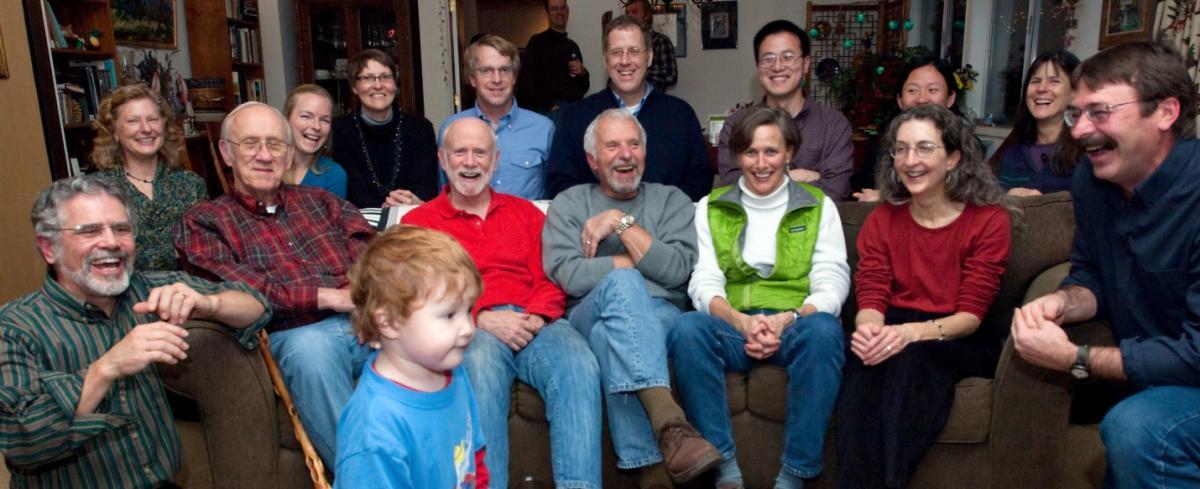
Figure 4. Some members of the OSU Statistics community in December, 2010. Back row, from left: Lisa Ganio, Associate Professor in Forest Ecosystems and Society (adjunct in the Statistics Department); Sarah Emerson, assistant professor; Ginny Lesser, professor; Paul Murtaugh, associate professor, John Molitor, Associate Professor in Public Health (adjunct in the Statistics Department); Yanming Di, assistant professor; Lan Xue, assistant professor; Jeannie Sifneos, research assistant. Front row, from left: Cliff Pereira, research associate; Ken Rowe, professor emeritus; Bob Smythe, professor emeritus; Jeff Arthur, professor; Alix Gitelman, associate professor; [Unnamed staff member]; and Dan Schafer, professor.
Environmental statistics and other contributions
Early collaborations with the College of Forestry, the Department of Fisheries and Wildlife, and the Geography Department led to an emphasis on statistics associated with natural resources and environmental monitoring. Lyle Calvin worked on salmon returns to Oregon’s rivers and streams for many years. W. Scott Overton (1965–1993) had a joint appointment with the Forestry College and worked closely with the Environmental Protection Administration (EPA), making major contributions to several aspects of EPA’s National Surface Water Surveys conducted during the 1980s and to EPA’s Environmental Monitoring and Assessment Program (EMAP). N. Scott Urquhart (1991–2001), a research professor, initially worked under Overton’s EPA cooperative agreement and then with EMAP, and made many statistical contributions to problems originating from EMAP. Don L. Stevens (2001–2010), who joined the Statistics Department in 2001 as a research professor, obtained EPA funding for the Department through the Designs and Models for Aquatic Resource Surveys (DAMARS) program. He continued to refine and promote an environmental sampling methodology that he had developed with another former student, Tony Olsen.
Fred Ramsey (1966–2003) made major contributions to estimation of wildlife population sizes. In addition to writing many research papers on estimating wildlife abundance, he participated in major surveys of bird populations in the Hawaiian Islands and various South Pacific islands. One of Ramsey’s Ph.D. students, Steven Thompson has made major contributions to wildlife sampling in his own academic career at Penn State and Simon Fraser Universities. One of Overton’s students, Ken Burnham, has made similar contributions to wildlife sampling and abundance methodology at Colorado State University.
Current faculty members who have interests in environmental and ecological statistics are Paul Murtaugh (1992– ) in statistical ecology, Virginia Lesser (1992– ) in environmental sampling, Lisa Madsen (2003– ) and Alix Gitelman (1999– ) in spatial statistics, and adjunct professor Lisa Ganio (Forest Ecosystems and Society) in natural resources problems. Many doctoral graduates from the Department have had active careers in environmental areas, including Tony Olsen, EPA; Nancy Lo, National Marine Fisheries Service; Rich McArthur, Nevada Water Resource Center; Trent McDonald, West Statistical and Environmental Consultants; Kerry Ritter, Southern California Coastal Water Research Project; and Kathy Irvine, USGS.
Notable research contributions in other areas include Dan Brunk’s pioneering work on isotonic regression and Don Pierce’s major contributions to methodology for radiation health epidemiology. Some faculty members who have had important impacts on students were Dave Thomas, whose knowledge, sensibility, and generosity defined the character of the Department for many years; Justus Seely, whose commitment to the Department and students was exceptional (and often entertaining); and Dave Birkes, who has played an unheralded role in the completion of many Ph.D. theses. Birkes has won the Statistics Students’ teacher of the year award in 10 of the 39 years it’s been given.
About one-fourth of the 122 Ph.D. graduates of the department have gone into academic positions: Jim Reinmuth (University of Oregon), Robert Fossum (University of Texas), Charles Phillips (Cal State Sonoma), Jim Daly (Cal Poly, San Luis Obispo), Tom Burnett (Naval Post Graduate School), Len Deaton (Cal State University, Los Angeles), Brad Crain (Portland State University), Ken Burnham (Colorado State University), Steve Thompson (Penn State, Simon Frazer University), Dana Thomas (University of Alaska), Gary Sexton (Oregon Health Sciences University), Michael Jacroux (Washington State University), Nancy Carter (Cal State University, Chico), Don Stevens (Oregon State University), Yadolah Dodge (University of Neuchâtel, Switzerland), Robert Gray (Harvard School of Public Health), Loretta (Robb) Thielman (University of Wisconsin-Stout), Cliff Pereira (Oregon State University), Luis Cid (Universidad de Concepción, Chile), Rick Rossi (Montana Tech), Steve Stehman (State University of New York), Lisa Ganio (Oregon State University), Mohamed Limam (University of Tunis, Tunesia), Dawn Van Leeuwin (New Mexico State), DeWayne Derryberry (University of Puget Sound and Idaho State University), Shaun Wulff (University of Wyoming), Kathy Irvine (Montana State University), Pachitjanut Siripanich (The National Institute of Development Administration, Thailand), George Fegan (University of Portland and Santa Clara University), Michel Lejeune (University of Grenoble, France), David Bogdanoff (Cleveland State University), Len Haff (University of California, San Diego), Roza Sjamsoe'oed (Syiah Kuala University, Indonesia), Caryn Thompson (Acadia University, University of New Brunswick, and University of Louisville).

